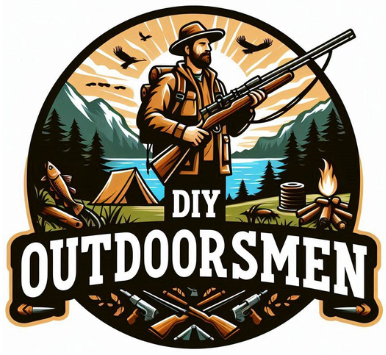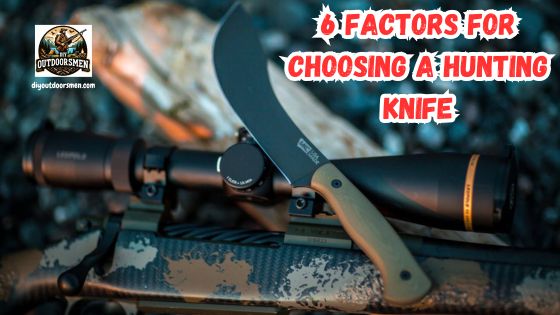Contents
Let’s kick things off by defining what a hunting knife is and what it’s primarily used for. A hunting knife isn’t just a tool; it’s a companion that can make or break a hunting trip. Its uses range from skinning game to cutting through bone and vegetation.
QUICK LOOK: 5 Factors to Consider When Choosing a Hunting Knife
What type of hunting will you be doing. Big game will require bigger knives than small game and birds.
- The materials used in its construction are as influential on performance as the design. A hunting knife endures considerable stress, so choosing the right materials is critical for longevity and effectiveness.
- The style of knife: Do you prefer fixed-blade or folding knives? Or knives with replaceable blades?
- Don’t just look at price tags—consider the value. A knife can be affordable without being cheap. Invest in a knife that will stay sharp, resist corrosion, and withstand the rigors of hunting.
- Warranty and after-sale support can tell you a lot about the manufacturer’s confidence in their product. Opt for brands with a solid warranty and accessible customer service.
- Don’t underestimate the importance of personal comfort and fit. How the knife feels in your hand is crucial, as is your ability to use it confidently and safely.
The blade is central to a hunting knife’s functionality. Variations in size and shape cater to different tasks, so it’s key to know what you’ll use it for the most. It’s not about the biggest blade, but the right blade for the job at hand.
Handle material might not be the first thing on your mind, but it shouldn’t be an afterthought. You want a handle that can withstand the elements and provide a secure grip, no matter the conditions.
You can find handles made from synthetic materials, which are great for durability, or natural materials, which can offer a comfortable grip and classic look.
Hunting Knife Types:
Now, let’s talk about knife types. You’ll typically have to choose between a fixed blade or a folding knife. Fixed blades are robust and reliable for the tough stuff, while folding knives offer convenience and portability.
Think about what you’ll be facing out in the wild and choose accordingly. You’re looking for something beyond just a sharp edge; you’re searching for a tool that will be by your side throughout your hunts, one that’s as dependable as it is functional.
What the blade is made of and how it’s crafted are just as important as its shape and size. That’s exactly what we’ll cover next, the materials and craftsmanship that set the best hunting knives apart from the rest.
Hunting Knife Materials and Craftsmanship
Your hunting knife is an essential part of your hunting gear. When you’re picking out a hunting knife, the materials used in its construction are as influential on performance as the design. A hunting knife endures considerable stress, so choosing the right materials is critical for longevity and effectiveness.
- Blade materials typically fall into two categories: carbon steel and stainless steel. Carbon steel is renowned for its sharp edge and ease of sharpening. On the flip side, it’s more vulnerable to corrosion, so diligent maintenance is key. Stainless steel, however, resists rust better but may require more effort to sharpen to a fine edge.
- Moving on to handles, you’ve got a variety of materials to consider. Options range from synthetics like G10 and rubber, which offer durability and a reliable grip in wet conditions, to traditional materials such as wood and bone, which may demand more care but add aesthetic value.
- Quality craftsmanship should never be an afterthought when selecting your hunting knife. Check for a solid construction without gaps or loose parts. A well-built knife will have a comfortable grip, a balanced feel, and, if it’s a folding knife, a sturdy locking mechanism.
10 High Quality Hunting Knife Options
Here are 10 quality hunting knives, along with their pros and cons, and what they’re best used for:
| Features | Benchmade Raghorn |
|---|---|
| Image | 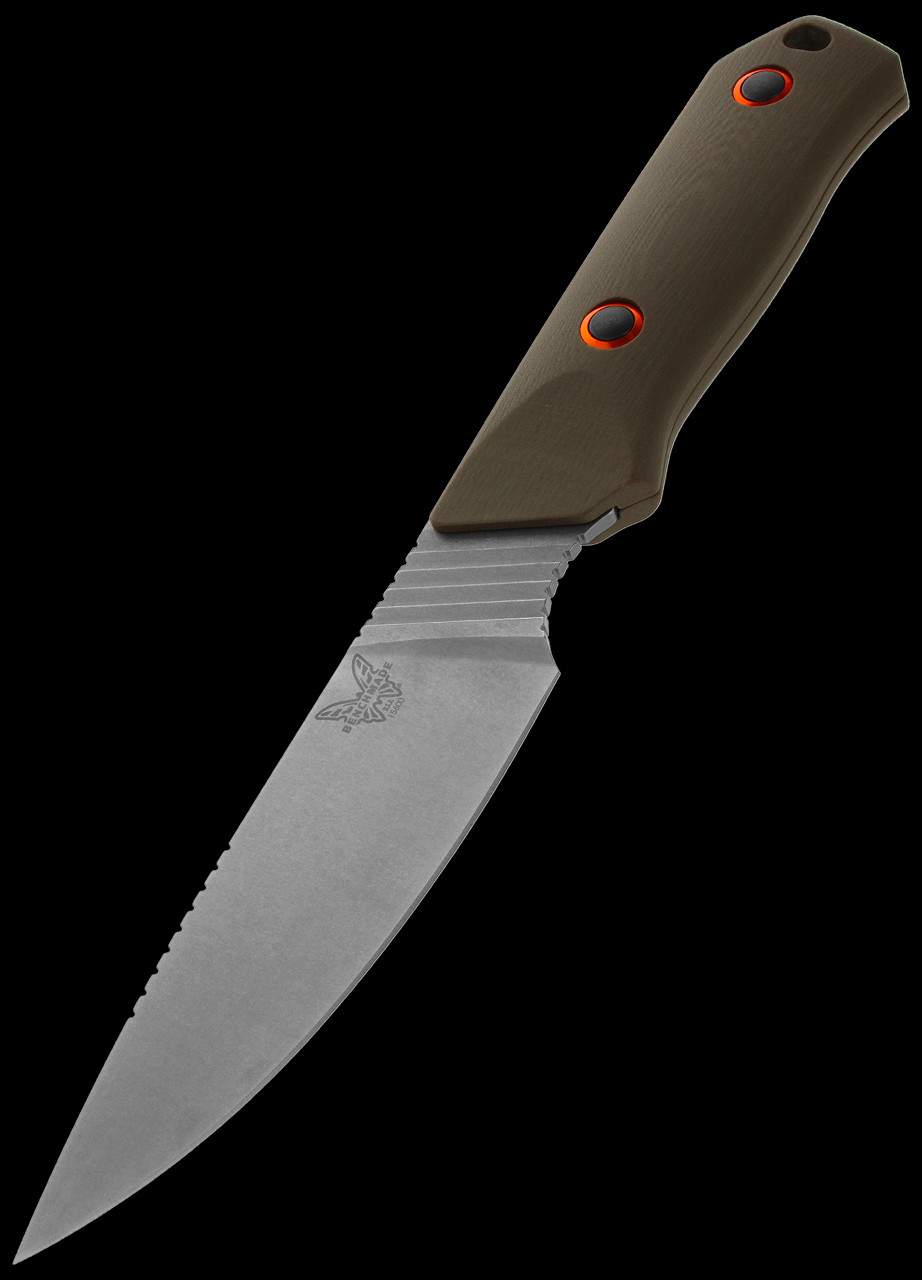 |
| Pros: | Excellent steel holds an edge for a long time, great ergonomics, light Blaze orange blade (on carbon fiber version) won’t get lost. |
| Cons: | The sheath doesn’t attach to a belt easily, carbon fiber version is expensive. |
| Best For: | General hunting and processing game. |
| Features | Outdoor Edge WildPak |
|---|---|
| Image | 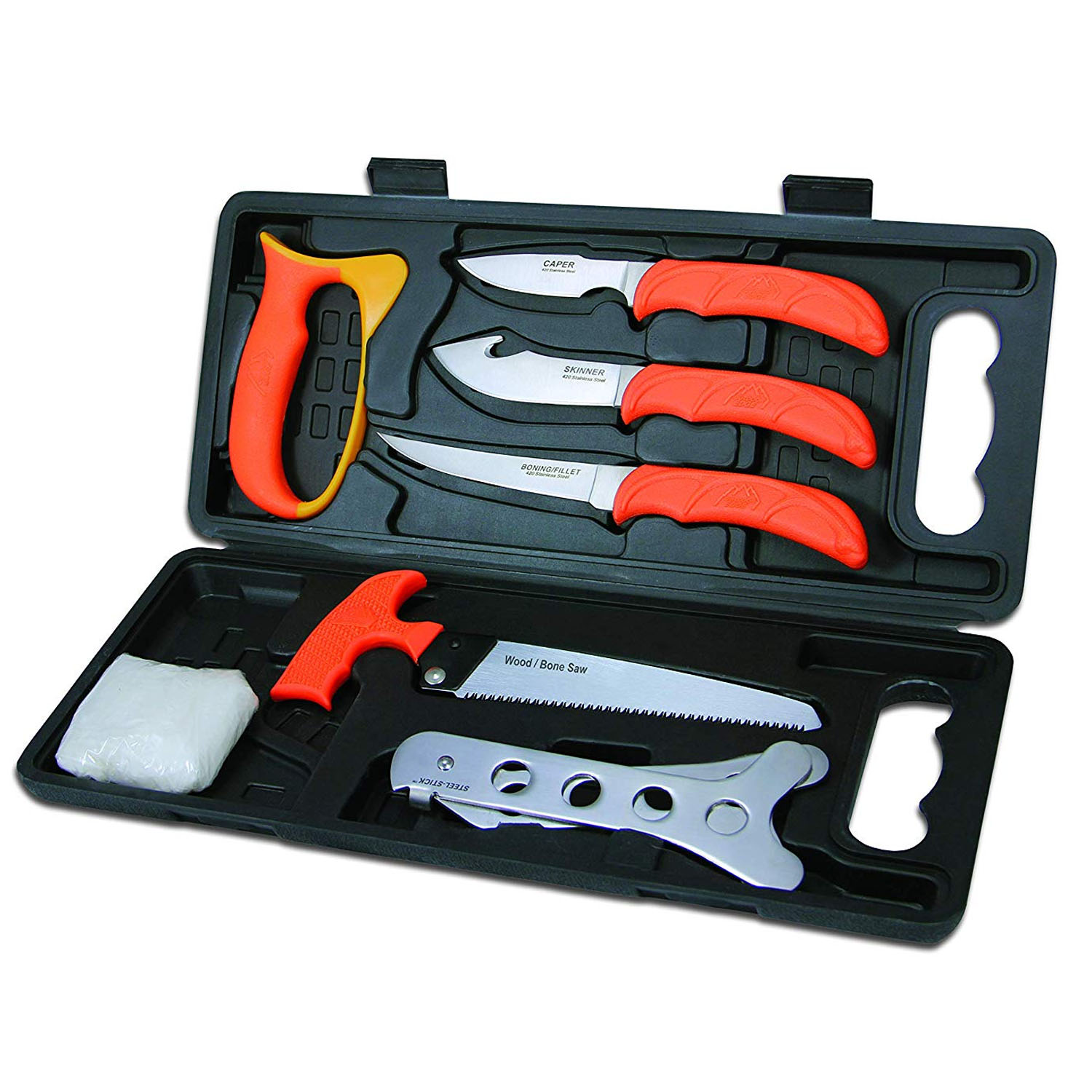 |
| Pros: | Affordable, includes multiple blades for different tasks, good variety. |
| Cons: | Blades may not hold an edge as long as higher-end knives. |
| Best For: | Versatile hunting and camping tasks. |
| Features | MKC Stonewall Skinner |
|---|---|
| Image | 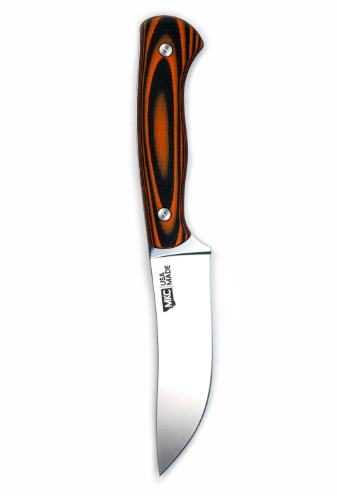 |
| Pros: | High-quality steel, excellent for skinning, good grip |
| Cons: | Can be pricey, heavier than some other options. |
| Best For: | Skinning and dressing game. |
| Features | Morakniv Basic |
|---|---|
| Image |  |
| Pros: | Lightweight, affordable, easy to sharpen. |
| Cons: | Not as durable as higher-end knives, basic design. |
| Best For: | Basic hunting and survival tasks. |
| Features | Argali Carbon Knife |
|---|---|
| Image | 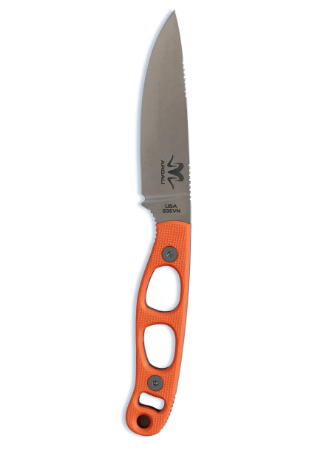 |
| Pros: | Ultralight, strong, excellent edge retention |
| Cons: | Expensive, not as versatile for non-hunting tasks. |
| Best For: | Lightweight hunting and survival. |
| Features | Gerber Gear Vital Big Game Folder |
|---|---|
| Image | 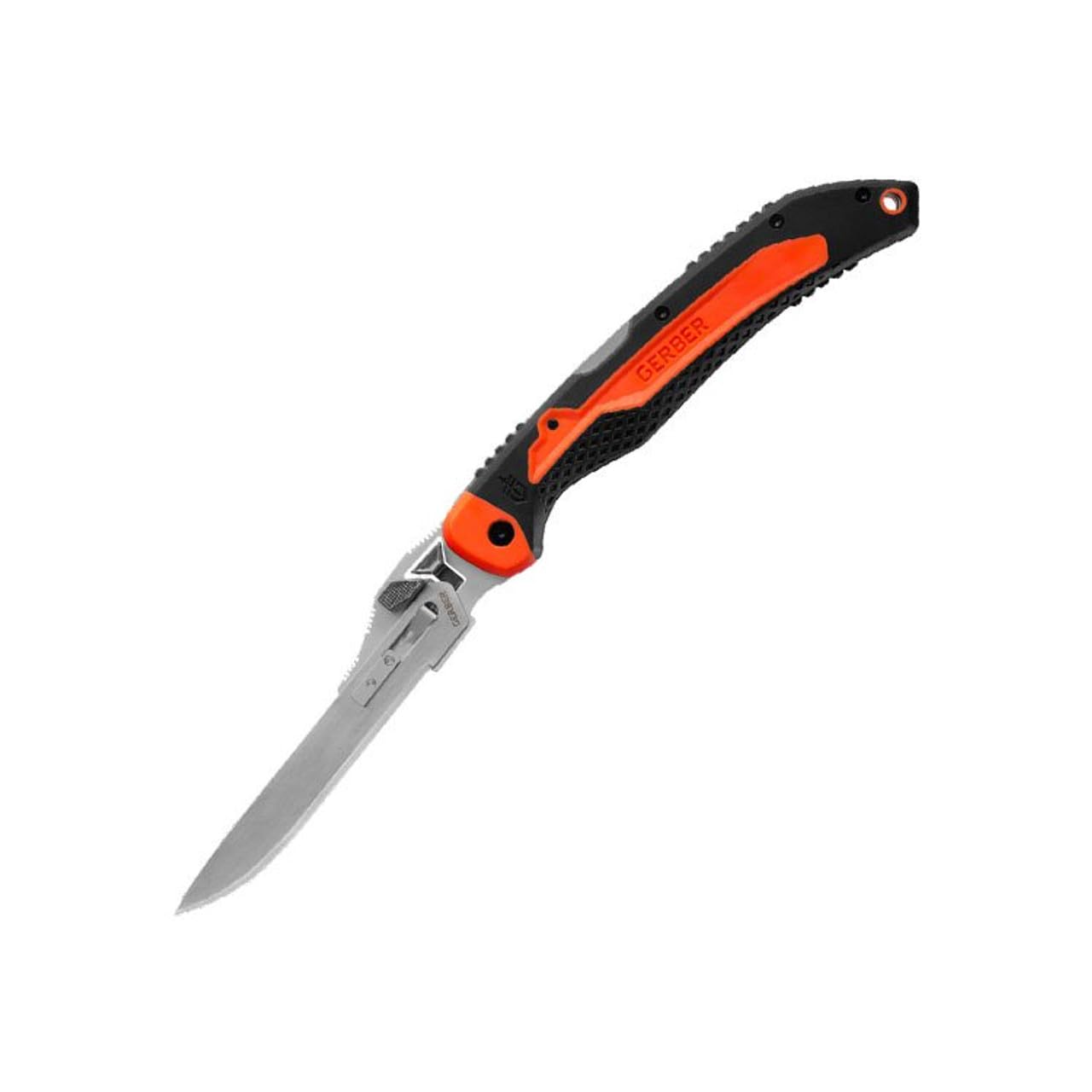 |
| Pros: | Replaceable blade, good grip, affordable. |
| Cons: | Blade may not hold an edge as long as fixed blades. |
| Best For: | Big game hunting and processing. |
| Features | Benchmade Meatcrafter |
|---|---|
| Image | 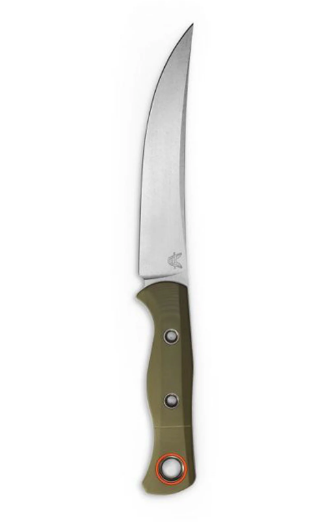 |
| Pros: | Excellent for processing meat, high-quality steel, ergonomic handle |
| Cons: | Can be expensive, specialized for meat processing. |
| Best For: | Processing game meat. |
| Features | KA-BAR Little Finn Hunter |
|---|---|
| Image | 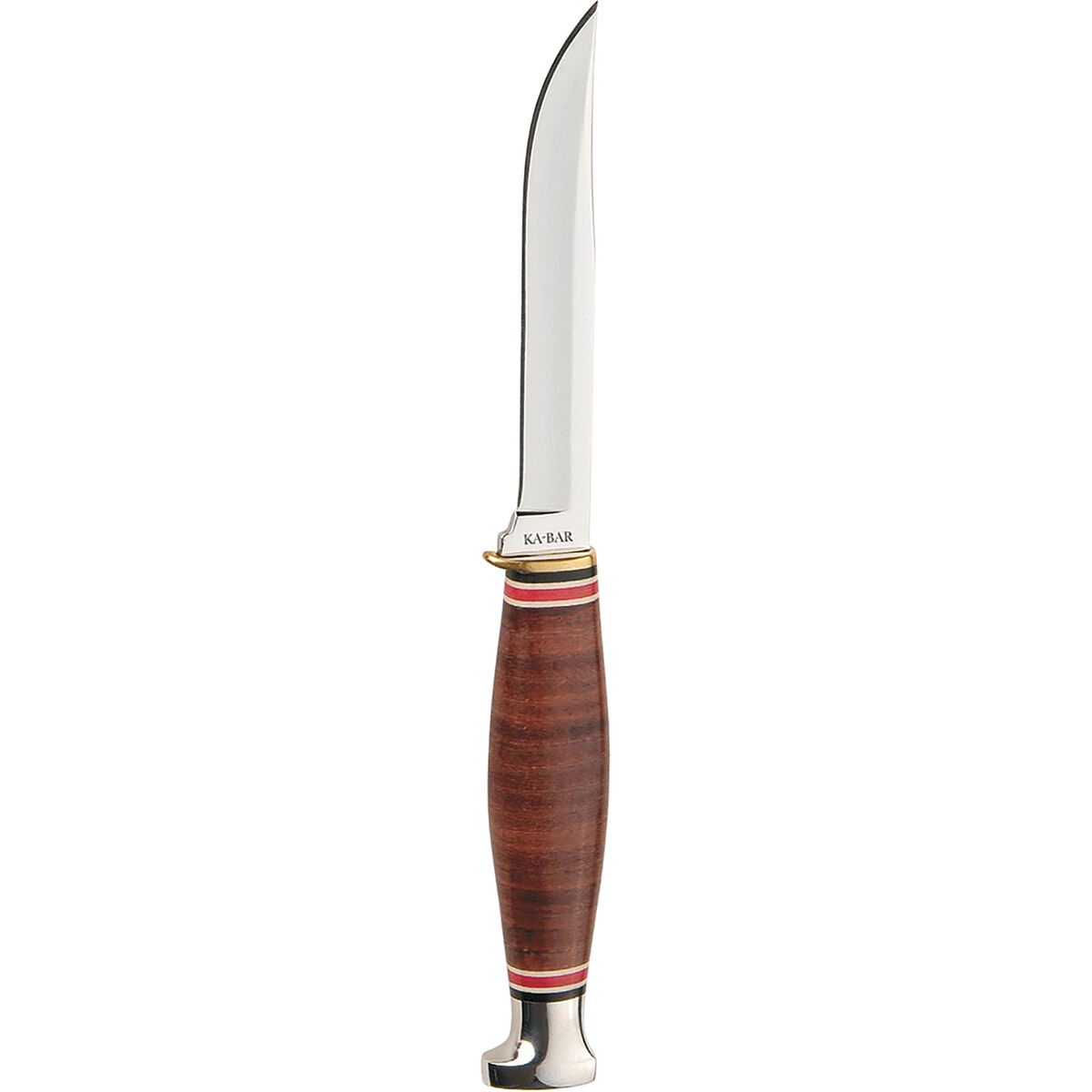 |
| Pros: | Affordable, good quality steel, comes with leather sheath |
| Cons: | Heavier than some ultralight options, basic design. |
| Best For: | General hunting and camping tasks. |
| Features | TOPS Muley Skinner |
|---|---|
| Image | 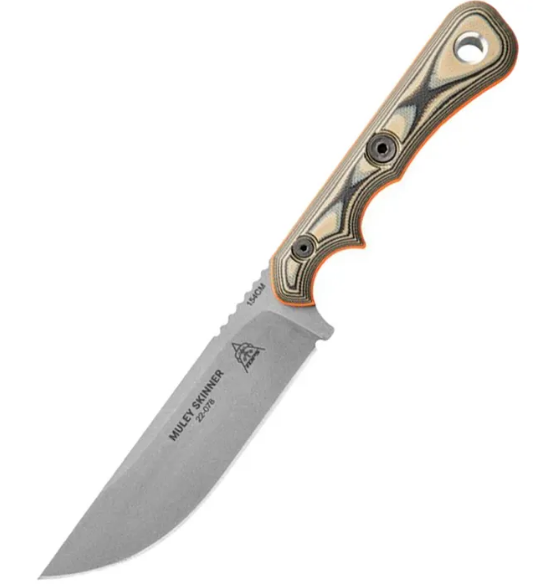 |
| Pros: | Excellent for skinning, high-quality steel, good grip. |
| Cons: | Can be pricey, heavier than some other options. |
| Best For: | Skinning and dressing game. |
| Features | ESEE-4 3D Hunting Knife |
|---|---|
| Image | 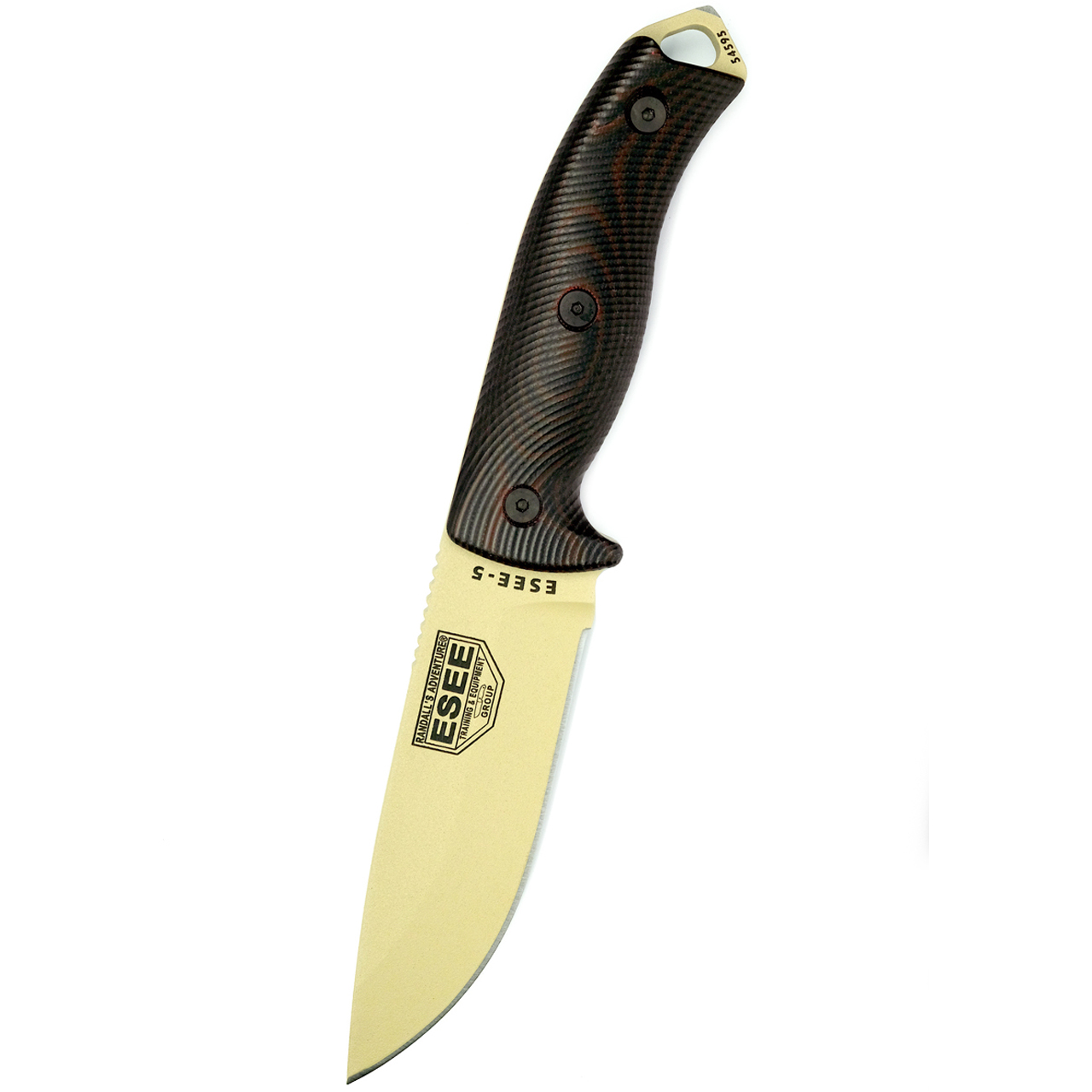 |
| Pros: | Great for bushcraft, durable, good grip. |
| Cons: | Can be heavy, not as specialized for hunting. |
| Best For: | Bushcraft and general outdoor tasks. |
Hunting Knife Design Features Specific to Game Processing
You might be surprised at how specialized hunting knives can get. Specific tasks like skinning and gutting game require blades designed for precision and control. A drop-point blade, for example, offers a strong, curved cutting edge, ideal for making clean cuts through skin and muscle without damaging the internals.
Then there’s the gut hook. Some hunters swear by it because it can slice open the abdomen of a game animal swiftly without snagging the intestines. This feature can make field dressing much smoother, but it’s not for everyone. It’s all about how comfortable you feel with the tool in hand.
You also have to consider whether you prefer a knife that’s a jack-of-all-trades or one that’s a master of one. Multi-functional knives come with various tools and blades that can handle everything from cutting rope to sawing branches.
However, these won’t match the effectiveness of a dedicated tool crafted for one specific purpose, like a boning knife that’s shaped to strip meat efficiently from the bone.
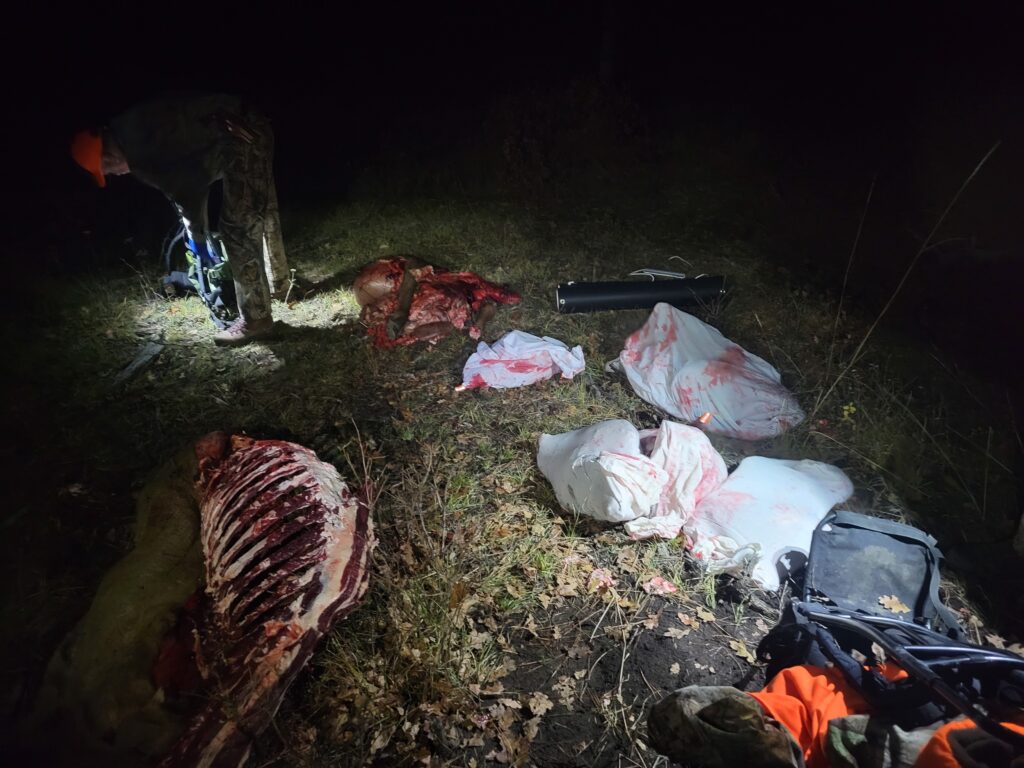
Remember, the design that works for one person might not be the best fit for another. It’s all about the tasks you anticipate and the game you hunt. The goal is getting a knife that feels like an extension of your hand and suits your hunting style.
Safety and Maintenance of Your Hunting Knife
A dependable hunting knife is a long-term investment. Keep it functioning at its best with proper care. First, understand the fundamentals of knife safety to prevent injuries.
- Always cut away from your body, and when not in use, keep the blade safely sheathed.
- Regular maintenance is crucial. After every use, clean the blade to prevent rust and residue build-up, especially if you have a carbon steel knife.
- Know how to sharpen your knife properly; a dull blade is inefficient and can be dangerous.
- Consider your storage solution. Humidity and dirt can degrade your knife’s condition. Opt for a dry, cool place, and use a knife block or soft pouch if carrying it with you.
Next, we’ll discuss the final steps to take before choosing your hunting lake. These include weighing personal needs against budget constraints and the importance of manufacturer support.
Making the Decision: 3 Factors to Consider
When it’s time to pick out a hunting knife, your individual hunting style should drive your decision. Think about the environments you’ll frequent and the typical game you hunt. A larger, heavier knife might serve well for big game, but could be overkill for small game birds.
- Don’t just look at price tags—consider the value. A knife can be affordable without being cheap. Invest in a knife that will stay sharp, resist corrosion, and withstand the rigors of hunting. Sometimes, spending a bit more upfront saves money over time because you won’t need to replace your knife as often.
- Warranty and after-sale support can tell you a lot about the manufacturer’s confidence in their product. Opt for brands with a solid warranty and accessible customer service. This is about choosing a company that stands behind the quality of their knives.
- Don’t underestimate the importance of personal comfort and fit. How the knife feels in your hand is crucial, as is your ability to use it confidently and safely. Ultimately, the ‘right’ knife is one that feels like an extension of your own hand.
This is where I sign off, but your adventure is just beginning. I really hope these points set you on the right track to finding a hunting knife that’s a trusty sidekick in the field and gives you many years of service and enjoyment. Good hunting, and may your blade be as sharp as your instincts!
Check Out Our Latest Hunting Articles:
- 5 Best Public Land Mule Deer Hunting In Colorado

- Bow Hunting For Mule Deer

- Best Public Land Mule Deer Hunting

- Drone-Based Scouting Services For Mule Deer

- Late Season Mule Deer Hunting Tips

- 8 Tips for Dealing with Hunting Pressure While Mule Deer Hunting
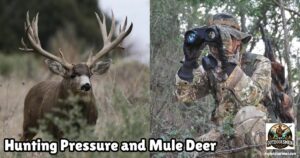
As always, stay safe, enjoy the journey and please try to leave it cleaner than you found it. If you have any comments, questions, ideas, or suggestions please leave them in the comment section below and I’ll get back to you ASAP. You can follow us on YouTube: Man Art Creations for videos of our DIY Adventures.
P.S. – Thanks so much for checking out our blog we really appreciate it. Just so you know, we may receive a commission if you click on some of the links that appear on our site. This helps us keep our content free and up-to-date for everyone. We appreciate your support!
